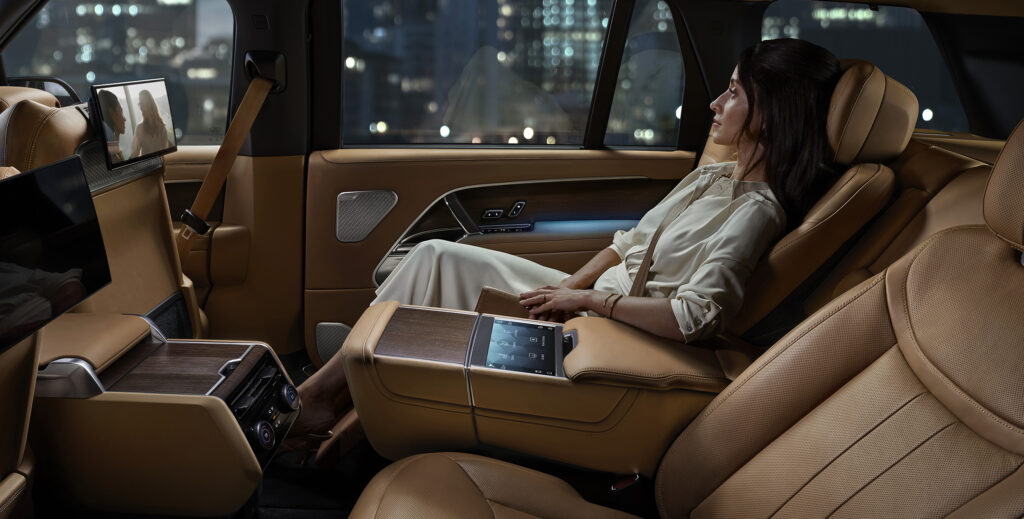Official: New Range Rover to go EV in 2024, PHEV for 2022
Land Rover has revealed the all-new Range Rover and confirmed there will be a full battery electric version available in 2024.
The pinnacle of the Land Rover lineup is bigger than ever and includes an optional seven-seat layout for the first time (previously only available in other Land Rovers, including the Range Rover Sport).
And Land Rover has confirmed the new Rangie will be offered as an EV by 2024.
“Battery-electric Range Rover set to premiere in 2024 as Land Rover embraces new Reimagine strategy with an all-electric powertrain for its original luxury SUV,” said Land Rover in a press release announcing the flagship model.

While it appears the focus is on a Range Rover BEV in the medium term, Land Rover is also working on fuel cell hydrogen technology for its Defender; a Range Rover FCEV would surely also be on the wish list longer term.
With an aluminium-intensive body that is larger than ever, the Range Rover will again be offered as a short- or long-wheelbase, the latter delivering more rear legroom.
READ MORE: Why electric cars will be more capable off-road
READ MORE: Land Rover announces fuel cell electric Defender
READ MORE: Incentives stopping Jaguar Land Rover launching PHEVs and EVs in Australia
And there’s a fresh tech injection that includes over-the-air (OTA) software updates and built-in Amazon Alexa for voice operation.

A curved 13.1-inch screen with haptic feedback dominates the centre console and there’s a 13.7-inch digital instrument cluster.
In lines with its off-road limousine positioning, the Range Rover is about opulence wherever you’re sitting, with acres of space and sumptuous finishes.

It’s also available as a seven-seater for the first time, complementing the four- and five-seat layouts that have long been a staple for Rangie life.
Range Rover PHEV for 2022
While petrol and diesel engines dominate the lineup, the new Range Rover will also be offered as a plug-in hybrid. The new Range Rover arrives in Australia priced from $220,200, representing a price increase of about 10 percent.
While Land Rover said recently it was holding off on PHEVs and EVs for Australia until incentives were in place, the company is planning to launch the plug-in hybrid P510e version of the new Range Rover by the end of 2022.

The PHEV is claimed to have a WLTP range of 100km, but Range Rover is saying the real-world electric range is more like 80km.
The Range Rover P510e uses a 3.0-litre inline six-cylinder turbo petrol engine and teams it with a 105kW electric motor. Combined outputs are 375kW and 700Nm, which Land Rover says will accelerate the PHEV to 100km/h in as little as 5.6 seconds.
The electric motor is claimed to take the car up to 140km/h, although clearly acceleration in EV mode will be more relaxed given there’s only 105kW of the 375kW on offer.
“The New Range Rover combines supreme on-road and all-terrain capability with electrified propulsion and new levels of connected capability,” said Nick Rogers, Executive Director, Product Engineering, Jaguar Land Rover.

The Range Rover PHEVs battery has a capacity of 38.2kWh and can be charged at up to 7.2kW with an AC charger or 50kW DC. That means charging times of about 17 hours from a home powerpoint, six hours from a home wallbox or an 80 percent DC charge in less than an hour.
Crucially, the Range Rover PHEV has been optimised to drive in all the off-road conditions of the regular car.
The battery pack is encased in boron steel “to withstand extreme 4×4 conditions”.
The PHEV can also tow up to 2500kg.

While Range Rover is only talking about the P510e for now, the company published a graphic outlining the hybrid system that showed there will also be a less powerful P440e at some stage (the numbers in the names denote the peak power measured in horsepower).




